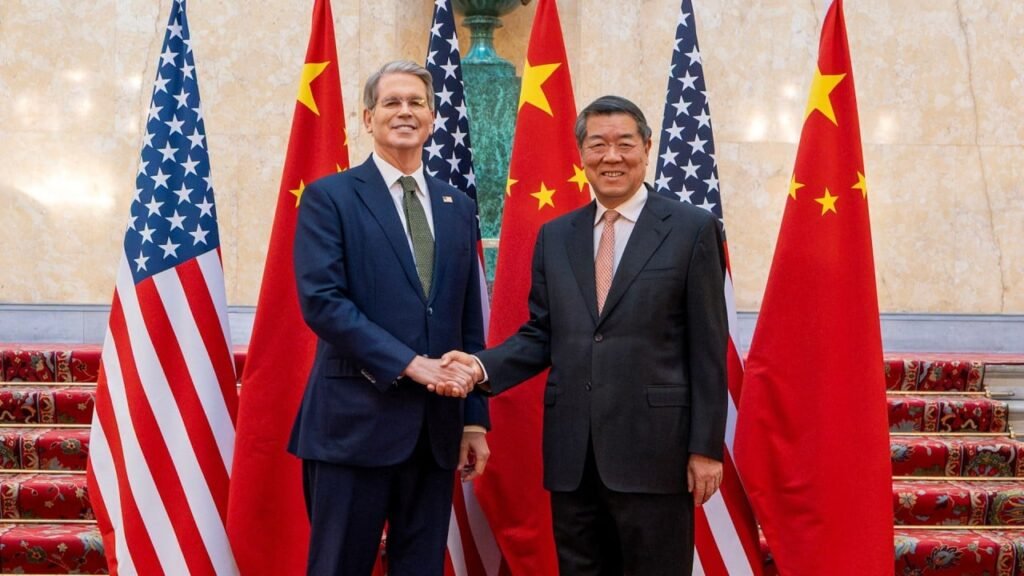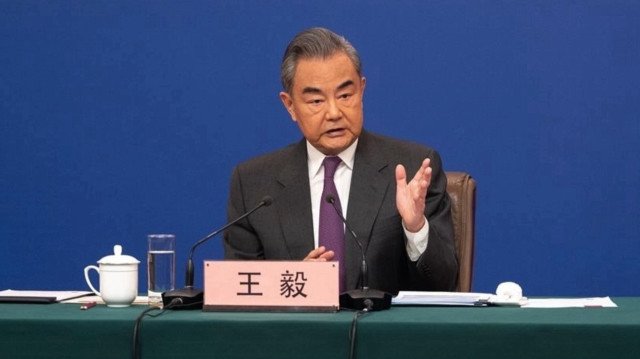A bank employee count China’s renminbi (RMB) or yuan notes next to U.S. dollar notes at a Kasikornbank in Bangkok, Thailand, January 26, 2023.
Athit Perawongmetha | Reuters
China is devising more ways for foreign institutions to use the yuan, as international confidence in the U.S. dollar falters.
The moves aim at challenging the greenback, experts said, even as the U.S. dollar remains by far the world’s predominant currency. The timing is favorable as the U.S. dollar index has tumbled more than 9% this year — while the offshore yuan has strengthened more than 2% against the dollar.
In a sign of growing resolve in Beijing to lure the world away from the dollar, People’s Bank of China Governor Pan Gongsheng in a speech last week at the high-profile Lujiazui Forum discussed “how to weaken excessive reliance on a single sovereign currency.”
He also announced plans to set up a center for digital yuan internationalization in Shanghai and promote trading of yuan foreign exchange futures. Beijing has already rolled out a digital version of its currency to replace some cash and coins in circulation.
Much of Beijing’s recent moves focus on the futures market.
Three major Chinese exchanges announced that starting last week, qualified foreign institutional investors would be able to trade 16 more futures and options contracts listed in mainland China.
The commodities covered include natural rubber, lead and tin, according to releases on the Shanghai, Dalian and Zhengzhou exchanges.

That follows the addition of dozens of other tradable futures contracts for foreign institutional investors earlier this year, according to Zhou Ji, macro foreign exchange innovation analyst of Nanhua Futures, a Hangzhou-based brokerage focused on futures products and research.
Zhou pointed out that besides expanding the range of hedging products for international institutions, those contracts increase the influence of the yuan in the global commodity pricing system.
In another step toward encouraging global investors to use the yuan, the Shanghai Futures Exchange announced in late May it was gathering feedback for a proposal to allow foreign currencies to be used as collateral for trades settled in yuan.
Other recent moves, though incremental, include China allowing qualified foreign investors to participate in on-exchange exchange-traded fund options trading from Oct. 9 for hedging purposes. Earlier this year, authorities also reportedly announced a 500-yuan fee waiver for international financial institutions to open a local account for accessing the bond market.
Morgan Stanley in January announced its local subsidiary could officially begin offering brokerage services for mainland China commodity futures, and planned to expand to equity and fixed-income futures and options once it received necessary qualifications.
Such access has been years in the making, as the U.S. financial giant said it received China’s approval back in May 2023 to set up a wholly owned brokerage in the country.
While global finance institutions and investors have long been interested in diversifying to China, Beijing’s strict controls on capital outflows and relatively opaque system have discouraged large-scale buying of mainland China assets.
While some worry about the unpredictability of U.S. policies in recent months, China has yet to present itself as a dependable alternative, said Matt Gertken, chief geopolitical strategist at BCA Research.
“China’s rule of law is inferior to the U.S., it does not offer a large and deep pool of liquid assets that is open to foreign investors like the U.S.,” he said, adding that Beijing has not been sufficiently addressing the geopolitical risks tied to its markets.
Global payments
It’s not just investment products. Over the years, China has developed a sprawling network of offshore yuan clearing banks and promoted the cross-border interbank payment system.
Increasingly, Chinese banks lending to emerging market economies have switched to the yuan instead of the U.S. dollar, partly due to lower lending costs, according to analysis published last month by the U.S. Federal Reserve.
The world’s second-largest economy has also been promoting bilateral trade settlement in yuan, and in February announced $100 billion for businesses in Hong Kong to access yuan-denominated financing.
“China appears to be accelerating its de-dollarization efforts, though progress remains uneven,” said Dan Wang, director of Eurasia Group’s China team, though she noted an increase in yuan-denominated settlements of cross-border payments between energy and commodities companies in China and abroad.
Another trend supporting yuan’s internationalization is Chinese companies’ expansion overseas, especially smaller businesses selling goods online.
Startup FundPark said since its financial partners Goldman Sachs and HSBC hold offshore yuan, China-based customers can easily use it for both operations in China and overseas.
Chinese authorities also subsidize some of the interest costs for loans denominated in offshore yuan, said Bear Huo, FundPark’s China general manager. He said overall use of the currency remains low but growing, although he declined to share specific numbers.
At a global level, the Chinese yuan lost some ground in international use in May, according to Swift’s RMB Tracker. The data showed that the yuan accounted for 2.89% of global payments by value in May, the sixth most-active currency – down from 5th place in the prior month.
The U.S. dollar accounted for 48.46% of global payments, followed by the euro at 23.56%, according to Swift.
De-dollarization
Beijing’s latest efforts to promote the yuan coincide with a wider and more concerted shift away from the dollar in Asia recently. The region is gradually reducing its reliance on the U.S. dollar, driven by geopolitical tensions, shifting monetary dynamics, and increased use of currency hedging.
Policy uncertainty by U.S. President Donald Trump has fueled a notable selloff in the greenback, which saw its steepest losses of the year in April.
Overseas investors looking to diversify away from America and hedge against U.S. assets are also boosting the yuan, said Ning Sun, senior EM strategist at State Street Markets.
“Our proprietary data indicates strong inflows to CNY, not a surprise given the good performance of CNY financial assets. Our data tracks only institutional investors, who are still very much underweight in CNY,” said Sun.








